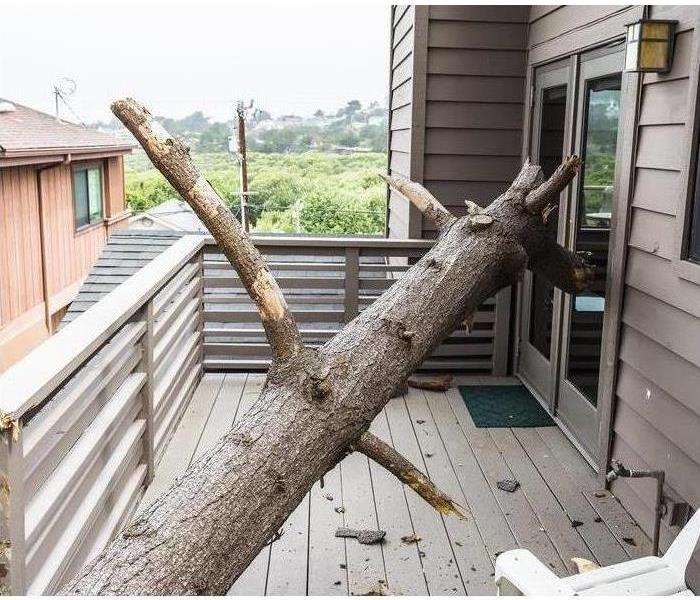Different Types of Storms & The Damage They Bring
7/2/2021 (Permalink)
Thunderstorms can be dangerous and incredibly damaging to your home. Thunderstorms can include many elements, such as lightning, wind, rain and hail. Understanding the different types of storms and how they could damage your home can help you properly plan and protect yourself and your family during a natural disaster. Knowing what to do if a bad storm is headed your way and what to expect during the aftermath could help to keep you and your family safe.
Certain areas are at an increased risk of experiencing bad storms. If you live in an area that is at a higher risk, being familiar with the types of storms that tend to occur can be incredibly helpful. The following is an overview of the most common storms and how they can damage your home.
Types of Storms
Different types of storms include thunderstorms, tornadoes, hurricanes, and winter storms. Numerous lives are claimed during these storms in the United States each year. These storms can be deadly, and they can severely damage your home. Water can infiltrate your home during storms, causing electrical damage and damaging the foundation, walls and roof through heavy wind, lightning, and rainfall--amongst other elements.
The most common ways in which your home can suffer from a severe storm are water damage, fire damage, and wind damage. Next we highlight the three main types of damage that often occur to homes in the United States during storms, including lightning, tornado, and flood damage.
Lightning
Lightning not only has the power to damage the electrical wiring in your home, but it also has the power to strike your home and start a fire. Any items that are plugged into electrical outlets in your home during a thunderstorm are at risk of damage. This includes items such as computers, cell phones, televisions, and kitchen appliances, amongst other things.
Unplugging electrical items while not in use is not only a great way to save energy, but also a way to protect these items from being damaged during a storm. It is also a good idea to stay away from electrical appliances and outlets during a thunderstorm.
Be prepared for power outages--which are common during storms--by having flashlights and candles readily available. If your home is damaged by lightning during a storm, be sure to contact a home damage restoration company near you that offers prompt service. These companies can restore parts of the home that have been damaged by lightning, as well as any fire damage that can occur from a home being struck by lightning.
Tornadoes
Tornadoes can be incredibly violent and destructive. A fast-moving vortex of high winds that connects from a cloud to the ground, a tornado can carry winds more than 200 miles per hour. Typically, tornadoes carry winds around 100 miles per hour, which can bring enough force to rip roofs off houses.
Homes can not be protected from tornadoes causing damage, however a quick initial response to damage can be effective in helping the restoration process be more efficient. If a tornado warning is given for your area, make sure to hunker down and get into the safest area possible (with no windows) wherever you are. After the storm has passed, check for any damage to your home and call a restoration professional as soon as possible in order to make your home "Like it never even happened."
Floods
Floods claim hundreds of lives every year in the United States, as floods are more severe than many people realize. A flood occurs when there is an overflow of water in an area that is normally dry. Heavy rain during storms means much of the water that comes from a storm cannot be absorbed into the soil or drains (like during normal rainfall), so the area floods. Flash flooding can occur if rivers or lakes become too full and begin to overflow.
If standing water builds up along the foundation of your home, flooding can damage your home. Water can also enter your home through tiny cracks and gaps. You may need storm damage restoration if this occurs.
Fight Back Against Storm Damage with SERVPRO
If wind, water, or fire have damaged your home during a storm, SERVPRO of Highland Village is here to help. We offer 24/7 service in order for your restoration process to begin right away. Our team is happy to answer any questions you may have through phone or email.





 24/7 Emergency Service
24/7 Emergency Service
